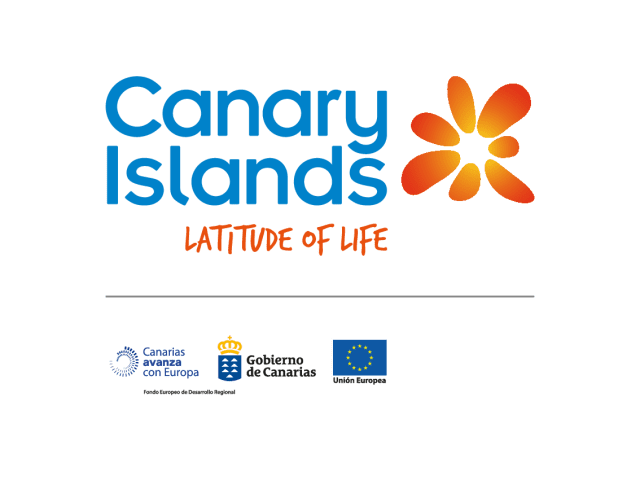The Canary Islands enhance their position as one of the world’s top-rated cetacean-watching destinations.
Tenerife’s West Coast has been declared a UNESCO World Heritage Site for cetacean conservation, making it the first Whale Heritage area in Europe with the Responsible Watching certification, a distinction granted by the World Cetacean Alliance. This recognition highlights the value of the natural resource of the archipelago’s coasts. It also encourages the responsible observation of the area’s dolphins and whales, turning the coastal strip between Tenerife and La Gomera into a sanctuary for the species, whose sightings are regulated and sustainable thanks to legislation promoted by the Council of Tenerife for the last two decades. Here, a colony of more than 500 pilot whales live year-round throughout the 22km marine arm which separates Faro de Rasca and Punta de Teno.
Throughout the year, 26 of the more than 79 species of cetaceans that inhabit the entire planet, such as dolphins, orcas or blue whales, pass through the Canary Islands. Many cetaceans can be sighted just 20 minutes off the coast of the islands thanks to the depth of the waters and the mild climate of the Canaries.
The certification that the marine strip between Tenerife and La Gomera have obtained is the only one in Europe which guarantees that whale watching is conducted in a responsible and habitat-friendly manner. This marine area is home to over 1,500 species, ten of which are unique to the islands, including the bottlenose dolphin and loggerhead turtle. The distinction is intended to promote the protection of this part of the sea, in line with the goals set by the United Nations International Union for Nature, aimed at raising the protection of marine territory to 30%.
The year-round good weather in the Canary Islands make whale watching an activity that can be enjoyed any day of the week. “Tenerife and the Canary Islands,” says Chloé Yzoard, a research biologist at the Department of Bioecomac of the University of La Laguna, “have privileged conditions, since a few meters off the coast there is great depth, because we live on volcanic islands,” she explains. “So in just one day we’ve seen nine different species of cetaceans and that’s incredible. You can’t see that many in one day anywhere else in the world,” she says.
For Mercedes Reyes, biologist and co-president of the Association of Entrepreneurs for the Sighting and Conservation of Cetaceans of Tenerife (ACEST), it has been essential to have pioneering legislation for the protection of cetacean-watching, since the Island Council of Tenerife decreed the Charter of Good Practices for the activity. “In Spain, cetaceans are protected by law, but in Tenerife we have a pioneering code of conduct for cetacean-watching. In fact, there is an official surveillance boat for this sporting activity since the boats that carry it out need a permit from the Ministry of Ecological Transition for the observation of cetaceans.”
This code obliges boat owners to respect the watching shifts, as the cetaceans have a protection zone of 500 meters where only 3 boats can be at a time, and prohibits boats coming closer than 60m to the whales. It is a mobile space for the protection of cetaceans. “Tourists who come to see cetaceans want to learn, become informed and are respectful because they are aware of the importance of caring for the environment.”
The richness of the waters of the Canary Islands, with 1,500km of coastline comprised by its eight islands, is much more important for the presence of these cetaceans, since, as the researcher from the University of La Laguna explains, “the fact that there is such a high number of cetaceans in our seas guarantees the good health of the ocean around us, because these mammals are carnivores and only feed when there is a guarantee of a healthy environment, indicating that it is a well-preserved marine area wherever they are,” says Yzoard. Hence, the certification granted by UNESCO highlights the great richness of the marine biodiversity of the strip between Tenerife and La Gomera, as well as the large number of species found in this area between Faro de Rasca and Punta de Teno.
Sustainable cetacean-watching thus joins the endless number of tourist attractions the Canary Island of Tenerife has. With more than 67km of coastline, visitors to the island are spoiled for choice when choosing how to spend their time in Tenerife.
As well as being declared a UNESCO World Heritage Site for cetacean conservation and certified as important for cetacean conservation by the World Cetacean Alliance, Tenerife also has two areas declared World Heritage Sites by UNESCO: Teide National Park and the city of La Laguna. In addition, there are more than a dozen protected national and natural parks as well as a network of more than 60 km of trails.
For more information on the Tenerife and the Canary Islands please visit www.hellocanaryislands.com
IMAGES: https://www.dropbox.com/sh/ldk6nwwk3rbfgxi/AAAnzR178aqWQxCXYNdjNXvZa?dl=0
ENDS
For more information, please contact Niamh Waters niamh@travelmedia.ie

